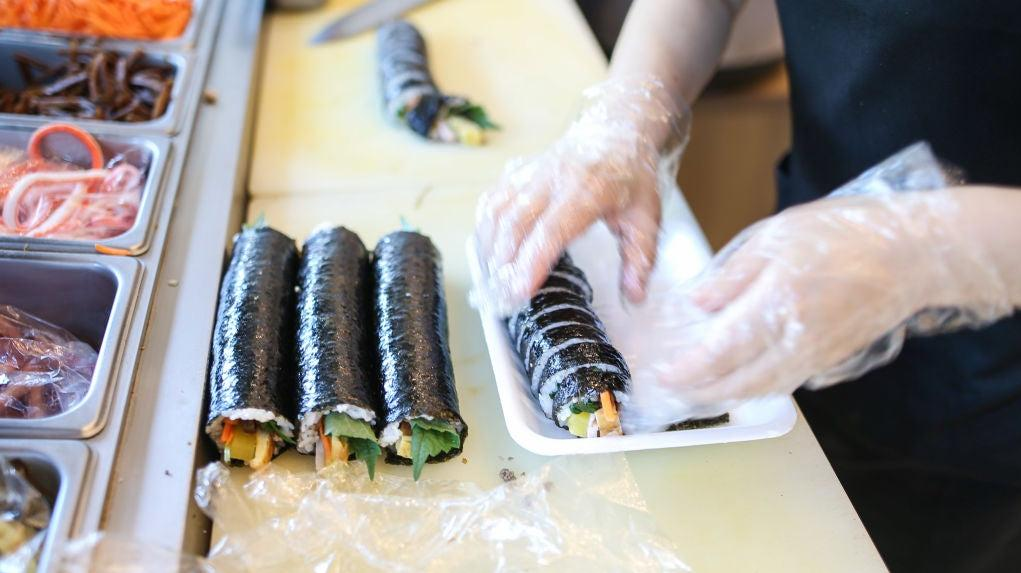Why You Should Never Call Kimbap "Korean Sushi"
Although kimbap and sushi have similar shapes, they aren’t the same thing.
Kimbap is a comfort food that I ate often growing up. The word "kim" means seaweed, and "bap" means rice, but that's deceptively simple, considering there are many other elements involved, mostly vegetables and protein. Kimbap travels particularly well, so if we were spending time outside for something picnic-ish, like a day out on the beach, bringing rolls for lunch was an automatic decision. When I'm introducing people to Korean food, this is one of the first things I point at when we're at the Korean grocery store.
However, I'd always struggled to find a way to describe it to non-Koreans. I had to settle on the term "Korean sushi," which always bothered me, since kimbap isn't sushi at all. But I get it. It's shaped like a futomaki roll, and that's just what people were already familiar with. The main issue was having to say, every time, "No, no, I'm telling you, there's no raw fish in it." Kimbap only contains cooked or pickled vegetables along with a source of protein or two, in the form of an omelet cooked into strips, Spam, or in my family's version, bulgogi, or marinated ribeye. (Check out some former coverage of a nice illustrated primer here.)
TASTE does a great dive into kimbap, explaining what it means to Koreans (and Korean-Americans like me), and why it's such an important dish to us. But the origins of the dish are cloudy. It could have started with the seaweed and rice wraps from the Joseon era, which lasted from 1392-1897 in the Jeolla province. Other suggestions say that the when the Japanese occupied Korea from 1910 to 1945, they brought over futomaki, and it merged with Korean cuisine to become its own thing.
Seung Hee Lee, co-author of Everyday Korean, puts it this way: "Is hamburger really American food? If you go back to the origin, it's from Germany or something, but ask any American—they think hamburger is their food. To me, kimbap is like that. It doesn't matter where it really came from. We all grew up eating it, [and] we have our own tricks and tips and preferences on how it's done."
Eunjo Park, executive chef at Momofuku Ssäm Bar, plays within the seaweed roll format and has previously used non-traditional elements like raw tuna and foie gras, to both modernize the dish and challenge the notion of what kimbap can be. At Kimbap Lab in Williamsburg, cofounder Sarah Lee and partner (and also chef) Won-il Lee, play with the idea of dipping kimbap into sauces, which is what veers away from tradition.
It's interesting to see where modern Korean food is headed, and learning about how chefs are tinkering with a traditional format makes me wonder what we might see next.
